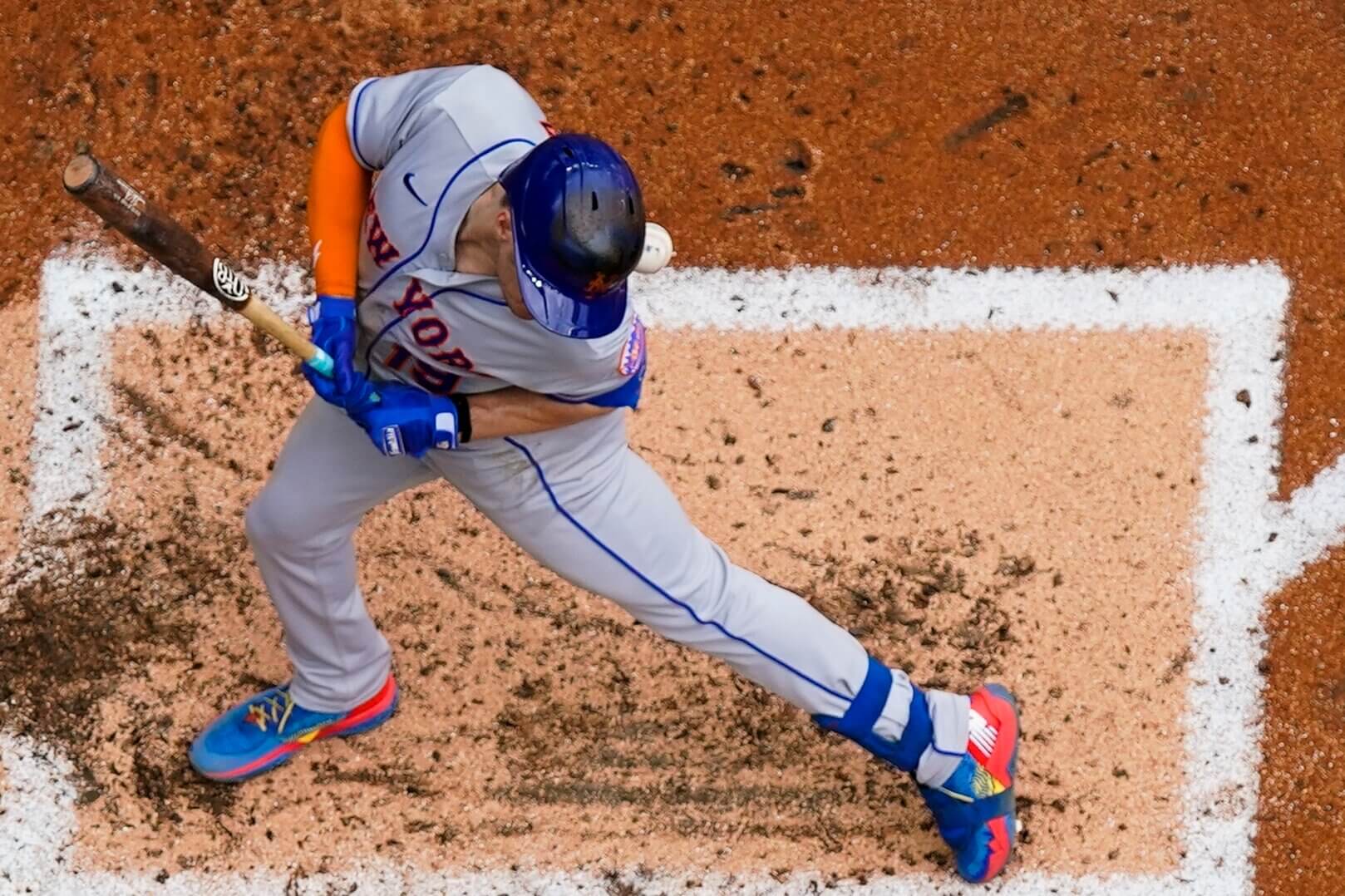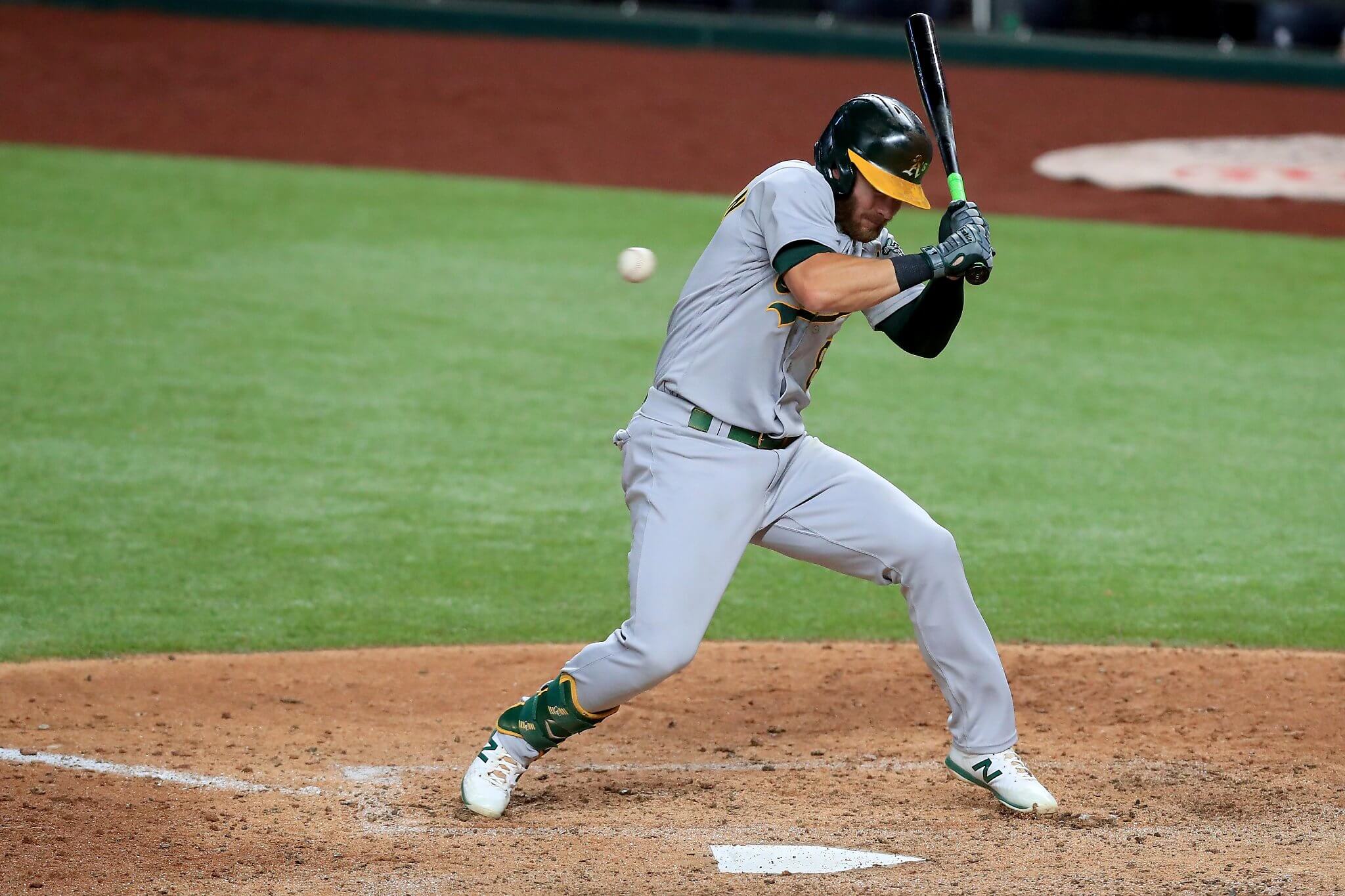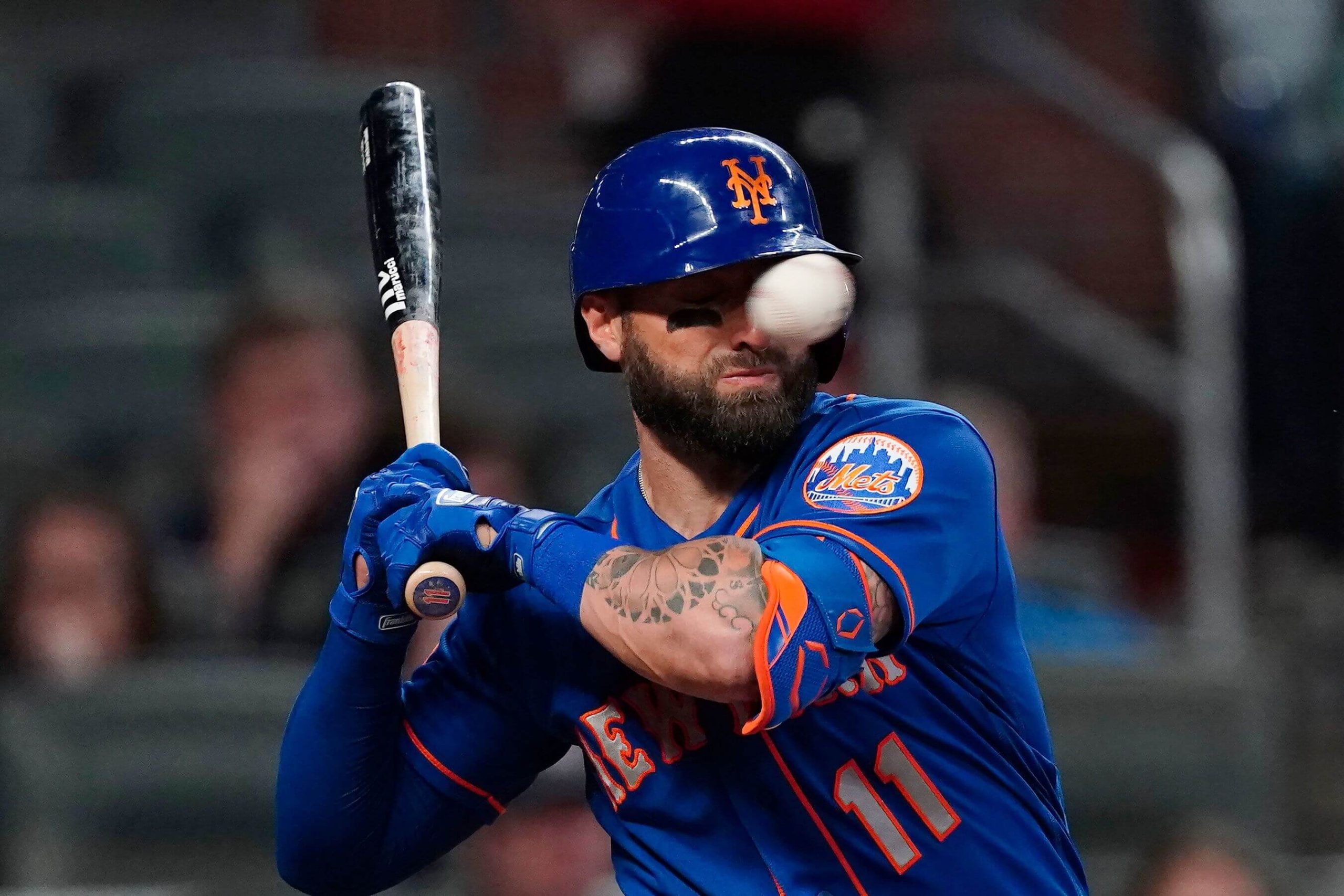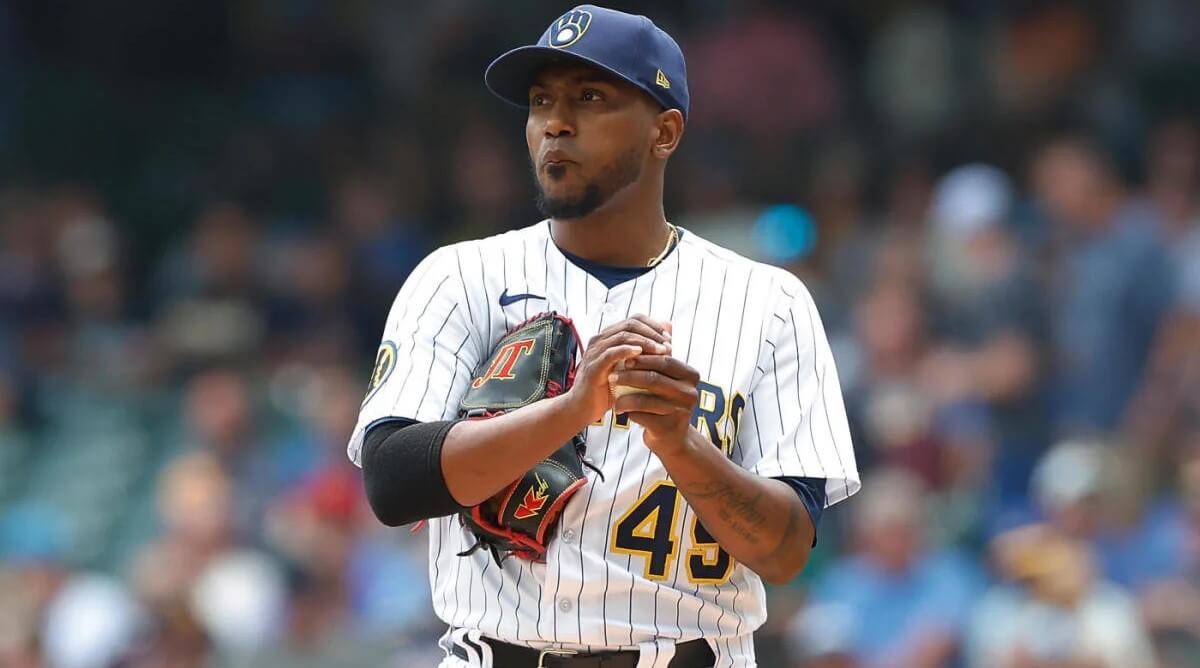A hit by pitch (HBP), or getting “plunked,” occurs in baseball when a pitcher hits the batter with a pitch. This awards the batter first base without liability to be put out. Generally, a batter being hit is unintentional on the pitcher’s part. However, a tactical hit by pitch may be used as a defensive strategy against batters.
Getting hit can happen in a variety of game situations. Most often it occurs when a pitch gets away from the pitcher and strikes the batter’s body or clothing. This is an occupational hazard for batters, who stand close to the plate to hit pitches. Protective equipment helps avoid serious injury. Being awarded first base can give the batting team a strategic advantage, if runners are on base. But, no one wants to get hurt. Umpires analyze pitch location and intent when deciding whether to punish the pitcher. Overall, being hit by a pitch is an accepted part of baseball, with a long history of unwritten rules and debates surrounding the practice.
When a Batter is Awarded First Base

In baseball, a batter is awarded first base when any part of their body or clothing is struck by a pitch outside of the strike zone. This is referred to as being “hit by pitch” or “hit by a pitch” (HBP).
The baserunner is awarded first base regardless of the pitch’s intent or location as long as no attempt was made to swing at the ball and their body was not positioned completely outside the batter’s box.
Some key points:
-
The batter is awarded first base as long as any part of their body is hit by the pitch. This includes the hands, arms, torso, legs, feet, or clothing like a shirt or pants. A pitch only needs to graze the batter to qualify.
-
The baserunner is not awarded first base if they swung at the pitch or it is a called strike. The ball must hit them before contact with the bat is made.
-
Leaning into a pitch intentionally to get hit does not qualify a batter for first base. Umpires have discretion to determine if the batter made no attempt to avoid a pitch.
-
The pitch location does not matter as long as some part of the batter’s body is hit while in the batter’s box area. A pitch inside or outside the strike zone still results in the batter being awarded first base if hit.
So in summary, a batter is awarded first base when any part of their body is hit by a pitch as long as they did not swing and were positioned properly in the batter’s box area. Only the umpire’s judgment can override awarding a baserunner in the case of a batter leaning into a pitch intentionally.
Pitch Location and Intent

Getting hit by a pitch is often accidental, but can sometimes be intentional. There are a few key differences between an intentional and unintentional hit by pitch:
-
Intentional: The pitcher deliberately throws at or near the batter to send a message, retaliate, or knock them off the plate. This is usually obvious based on the game situation, pitch location, and reaction of the players.
-
Unintentional: The pitch gets away from the pitcher and hits the batter accidentally. This is often the result of a pitcher losing control of a pitch or missing his intended location.
Some of the most common pitch locations that lead to accidental hit by pitches include:
-
Inside pitches: Pitches on the hands or that tail inside off the plate frequently hit batters, especially when pitchers are struggling with command.
-
Up and in: Elevated fastballs that run in on a batter’s hands are a prime source of hit by pitches. The high pitch location makes it hard for batters to get out of the way.
-
Sweeping curveballs/sliders: Late breaking pitches that start outside the zone but sweep back over the inner half of the plate frequently hit batters on the elbow or hip as they fail to get out of the way.
-
Wild pitches/passed balls: Badly missed pitches or wild pitches that get past the catcher can also end up hitting batters unintentionally.
So while hit by pitch can be intentional at times, more often it’s the result of pitchers losing command and hitters failing to avoid errant pitches. The location and context usually makes it clear whether a batter was hit intentionally or just crowded and hit unintentionally.
Game Situations
Being hit by a pitch can occur under many different game situations, and is often strategically used by teams for certain advantages.
One of the most common strategic uses of a hit by pitch is to put a runner on base. When a team has a weak hitter at the plate or is trailing in the late innings, the pitcher may deliberately throw inside to allow the batter to take first base. This avoids the risk of a double play or strikeout and keeps the offense moving. Managers and coaches will sometimes even call for an intentional hit by pitch in key situations to get a rally going.
Another game situation where hit by pitches occur more frequently is when tempers have flared between the teams. After a heated exchange or controversial play, pitchers may throw at opposing batters in retaliation. This form of “frontier justice” attempts to send a message or exact some revenge. Catchers will sometimes subtly indicate an incoming retaliation pitch through coded signals. Hits by pitch are more likely when rivalry games become intense or bad blood exists between opponents.
The strategic and retaliatory uses of hit by pitch illustrate how they are more than just accidents, but calculated decisions made within the broader context of the game. Batters understand this when digging into the box in high-stakes or emotional situations.
Player Safety

Player safety is a major concern when a batter is hit by a pitch in baseball. Being struck by a fastball traveling over 90 mph can certainly cause injuries. There have been some alarming incidents throughout baseball history that highlight the need for caution.
Most concerning are hits to the head and face area. There is always a risk of concussion when a batter is struck in the helmet. More serious injuries like skull fractures, brain bleeding, loss of consciousness, or even death have occurred, but are thankfully rare. Precautionary measures are taken if a batter appears stunned after a head shot.
Other common injuries from HBPs include broken bones in the hand, wrist, arm, ribs, or foot. Balls hitting unprotected areas often cause painful bruising as well. Catchers are particularly vulnerable and have sustained many hand fractures over the years.
Protective gear is essential for batter safety. Helmets have prevented numerous fatalities since their introduction. Modern helmets are even safer, with most using technologies like dual density foam and face guards. Elbow, hand, and shin guards also help reduce injury risk when struck.
Umpires play a big role in preventing injuries from errant pitches. If a pitcher demonstrates poor control and repeatedly hits batters, the umpire will issue a warning. Further transgressions can lead to immediate ejection from the game. These penalties discourage pitchers from recklessly endangering players.
While injuries are an inherent part of baseball, officials constantly seek ways to maximize player safety. No one wants to see a promising career altered by an avoidable hit by pitch. Caution and protective equipment help make the game as safe as this type of incident allows.
Hit By Pitch Records and Statistics
Being hit by a pitch is a relatively common occurrence in baseball, though some players are hit more frequently than others over the course of their careers.
Here are some key records and statistics when it comes to being hit by pitches in MLB:
-
Career Records: The MLB record holder for most times being hit by pitch in a career is Hughie Jennings, who was hit 287 times between 1891-1903. More recent players near the top of the career list include Craig Biggio (285 HBP), Don Baylor (267 HBP), Jason Kendall (254 HBP), and Chase Utley (204 HBP).
-
Single Season Records: The single season record for HBP is 51, set by Ron Hunt in 1971. Only three other players have recorded 50+ HBPs in a season: Craig Biggio (50 in 1997), F.P. Santangelo (50 in 1997), and Shin-Soo Choo (50 in 2021).
-
Active Leaders: Currently active players with the most career HBPs include Anthony Rizzo (167), Shin-Soo Choo (162), and Starling Marte (140).
-
Team Records: The modern MLB record for most HBPs by a team in one season is 105, set by the 2021 Cincinnati Reds. The all-time record is 198 by the 1890 Brooklyn Bridegrooms.
-
Statistical Trends: As a percentage of total plate appearances, HBPs have generally increased over the decades, from under 1% pre-1920 to over 2% in the 2010s. This reflects greater willingness to “take one for the team” and get on base.
Getting hit by pitches, whether intentionally or not, is a unique statistic in baseball that highlights a batter’s durability and willingness to sacrifice their body to reach base. The records also demonstrate how the acceptance of HBPs as a tactic has evolved over baseball’s history.
Rules and Penalties

In Major League Baseball, being hit by a pitch is covered under Official Baseball Rule 5.05(b). This rule states that a batter is awarded first base when they are touched by a pitched ball outside of the strike zone, with some exceptions.
The key points of the rule are:
-
The ball must hit some part of the batter’s body or clothing. If it only hits the bat, it is considered a strike.
-
The batter’s hands are not considered part of the body for a hit by pitch. If the ball hits only the hands, it is a strike.
-
The ball must be inside the batter’s box to be considered a hit by pitch. If any part of the ball is over the plate, it is judged a strike instead.
-
The batter cannot obviously attempt to get hit by a pitch, such as leaning into the zone. The umpire has discretion to call a strike instead if they judge the batter made no effort to avoid being hit.
-
A pitch that bounces and then hits the batter is ruled a hit by pitch, so long as it is not in the strike zone.
The umpire has a key role in enforcing these rules and judging each hit by pitch situation. Their judgment takes precedence on whether the ball is in the strike zone, whether the batter attempted to get hit, and any penalties to impose.
If the umpire feels a pitcher has intentionally thrown at a batter, they can choose to warn or eject the pitcher. If warnings have already been issued to both teams, the pitcher is automatically ejected for intentionally hitting a batter. Umpires consider the game situation, pitch location, and history between the teams when deciding if a pitch was intentionally thrown at a batter.
Famous Moments

Some of the most dramatic and memorable moments in baseball history have involved hit by pitches. Getting plunked by a fastball is painful and dangerous, so it’s understandable when tempers flare after a batter is hit. While most hit by pitches are unintentional, some are seen as retaliation or “sending a message” to the opposing team. This builds tension and can ignite explosive confrontations.
One of the most infamous hit by pitch incidents occurred during a regular season game between the Red Sox and Yankees in 2003. Red Sox pitcher Pedro Martinez hit Yankees bench coach Don Zimmer in the head, leading to a bench-clearing brawl. Later in the game when Manny Ramirez was hit by a pitch from Roger Clemens, both teams charged onto the field and a prolonged fight broke out. Police officers had to intervene to restore order.
The Red Sox and Yankees have a long history of bad blood between their teams and fans, so hit by pitches often lead to fights when they match up. A 1976 game saw Lou Piniella collide with Carlton Fisk at home plate, igniting a massive brawl with both benches emptying. More recently in 2018, Red Sox pitcher Joe Kelly intentionally threw at the head of Yankees slugger Tyler Austin, resulting in punching and wrestling that took several minutes to break up.
One of the worst baseball brawls of all time happened in 1965 between the Giants and Dodgers. After Giants pitcher Juan Marichal bloodied Dodgers catcher John Roseboro with his bat, both teams furiously fought using bats as weapons. It took 14 minutes and dozens of police to control the melee. This incident captured national headlines and reflected the intense rivalry between the two teams.
While most hit by pitches are accidental, they can produce iconic moments when emotions boil over into confrontations. Charging the mound, bench-clearing brawls, and long-simmering team rivalries have produced some of baseball’s most notorious fights and incidents. Getting hit stirs passions in players and fans alike.
Cultural Significance

Getting hit by a pitch has developed a significant cultural meaning within baseball, as it relates to the sport’s unwritten rules and norms.
Intentionally hitting batters is often seen as a way for pitchers to retaliate, send a message, or enact justice over perceived slights or improper conduct by the opposing team. Plunking a batter after one of your teammates gets hit, for example, is a long-held form of on-field payback. Fans of the pitcher’s team may cheer these retaliatory hit by pitches as a way of standing up for their players.
However, many argue this “eye for an eye” culture of throwing at batters should not be part of today’s game, as it leads to unnecessary injuries and violence. Critics believe intentionally hitting batters, whether as retaliation or not, goes against the spirit of sportsmanship and fairness. There have been calls to hand out harsher punishments for pitchers who appear to target opponents intentionally.
Regardless of one’s stance on the practice, getting hit by pitches, both intentionally and unintentionally, has woven itself into the fabric of baseball’s culture and unwritten rulebook. Batters often react angrily when they feel a HBP was deliberate, and may stare down the pitcher or charge the mound. Fans read into HBPs to try and determine if they were accidental or intentional. television broadcasters frequently speculate on a pitcher’s intent after a batter gets hit. For better or worse, the hit by pitch has developed layers of hidden meaning and consequences in the game of baseball.
Conclusions
Getting hit by a pitch in baseball is more than just a common occurrence in the game. While some batters crowd the plate to gain an advantage, most instances of a batter being hit are unintentional and a result of a pitch getting away from the pitcher. Nonetheless, the hit by pitch is an important part of baseball’s history, tactics, and cultural fabric.
Key points:
-
Batters are awarded first base when hit by a pitch, unless they make no attempt to avoid it or lean into the pitch on purpose. This awards the batter and their team a baserunner, which is strategically significant.
-
Most hit by pitches occur unintentionally, though some pitchers use them tactically in certain situations. Some batters are more likely to get hit as they crowd the plate.
-
Player safety is a concern and has led to rule changes regarding head-hunting. But most hit batters escape uninjured, especially with required protective gear.
-
Records for most career hit by pitches showcase some of baseball’s toughest and most strategic players through history. Notable players like Hughie Jennings, Craig Biggio, and Ron Hunt got hit hundreds of times.
-
Some of baseball’s most famous moments involve hit by pitches, like Don Zimmer in the 1949 World Series. These moments add to the drama and storylines that make baseball so compelling.
-
Getting hit has cultural connotations of toughness and strategic thinking in baseball. The most adept batters know how to avoid getting hit or how to strategically let themselves get hit.
Ultimately, while an occupational hazard, the hit batsman is deeply ingrained within baseball’s fabric. Understanding the hit by pitch provides insight into baseball’s unwritten rules, historical lore, strategic nuances, and cultural identity.








